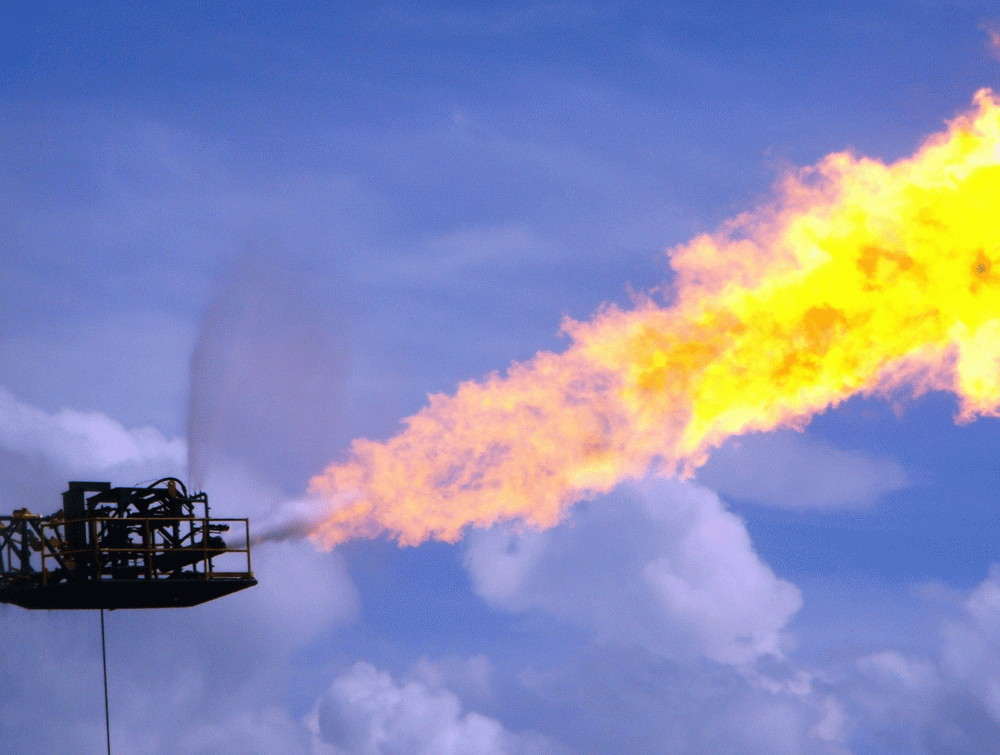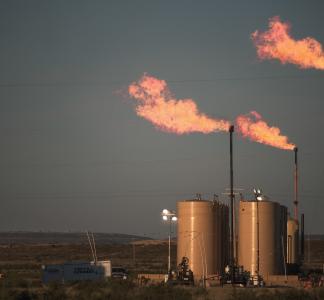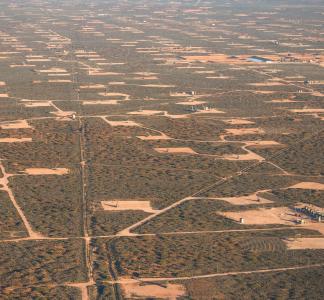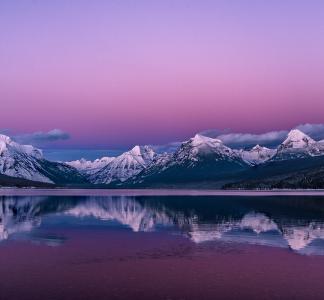Giant methane plume highlights need to combat climate change

Methane flares.
Ken Doerr, flickr.
A methane hotspot shows the need for better regulation
Studies on a methane hot spot in the Southwest show a need for better regulation of methane pollution from oil and gas production on public lands.
UPDATE: A recent study by NASA and others on the large methane plume in the Four Corners region once again shows the urgent need for stronger federal standards to regulate methane from all oil and gas facilities on public lands.
Satellite imagery previously identified a methane hot spot over the Southwest, and the new analysis used airborne infrared cameras to locate the methane pollution sources from oil and gas production in real time. As the study shows, the methane hot spot is largely the result of the top 10 percent of oil and gas “super emitters” that spew tons of methane into the atmosphere and contribute to about half of total methane emissions in the Four Corners region.
 Currently, the Bureau of Land Management is in the final stages of reviewing a proposed rule to cut methane leaks and reduce venting in oil and gas production across the nation. Expected to be finalized by the end of the Obama administration, it is supported by nearly 200,000 people and can help stop these methane “super emitters.”
Currently, the Bureau of Land Management is in the final stages of reviewing a proposed rule to cut methane leaks and reduce venting in oil and gas production across the nation. Expected to be finalized by the end of the Obama administration, it is supported by nearly 200,000 people and can help stop these methane “super emitters.”
As part of several measures the Obama administration is taking to cut methane emissions by 40 to 45 percent by 2025 to cut pollution and combat climate change, the proposed BLM rule will build on recent Environmental Protection Agency standards to reduce methane pollution across the nation.
This scientific study builds on previous studies and discussion that highlights the need for BLM to finalize the methane rule to help protect our air, public health and climate!
April 20, 2015
Scientists from around the country recently gathered in Farmington, New Mexico to discuss a massive methane hot spot over the Four Corners region of the Southwest United States. Methane is an extremely potent greenhouse gas commonly emitted from energy extraction and transport on public lands.
Satellite imagery indicates that the hot spot under discussion is the largest methane plume in the country. Researchers are working to pinpoint these sources in order to help guide much-needed solutions to address the problem.
 Relative potency of methane as a greenhouse gas
Relative potency of methane as a greenhouse gas
Methane is the second most prevalent pollutant in the atmosphere behind carbon dioxide, but it has an even greater impact on climate change in the immediate future.
It’s a particularly harmful greenhouse gas because of its ability to trap heat in the atmosphere. Over a 100-year period the impact of methane is 34 times greater than that of carbon dioxide—and even more than that in the near term.
According to a recent report from The Wilderness Society, unaccounted greenhouse gas emissions from federal lands could make up to almost 21 percent of all U.S. greenhouse gas emissions.
Sources of methane emissions
Methane is emitted from a number of sources on public lands, and many of them are easily preventable. Most of these sources can be traced back to public oil and gas resource development and transportation. The extensive waste of this taxpayer-owned resource can be greatly reduced by simple, affordable fixes.
“Fugitive emissions” that result from unintentional leakage account for the majority of all methane emissions. Large quantities of the gas leak into the atmosphere as it’s pumped through pipelines and through the supply chain. New technologies and improved practices can greatly reduce these losses.
Another common source of emissions comes from intentionally discarding methane into the atmosphere through practices known as “venting” and “flaring”. These practices were traditionally done as safety precautions, but affordable improvements to infrastructure can safely reduce the need to intentionally waste public resources.
These problems waste methane that could be affordably captured for use and sale. Basic updates to infrastructure could turn losses into profits while creating jobs in the process.
Finding a solution
President Obama recently announced a plan to reduce methane emissions from public lands. This would include mandating that companies pay for all of the gas that is developed, including methane wasted and released into the atmosphere. The administration’s plan will hopefully also provide incentives for companies to adopt better technology to reduce methane waste. The discussions from the recent forum in Farmington have the potential to help guide that initiative.
“If we can verify the methane emissions found by the satellite, and identify the various sources, then decision-makers will have critical information for any actions they are considering," says Gabrielle Pétron, a scientist from the Cooperative Institute for Research in Environmental Sciences at the University of Colorado Boulder.
President Obama’s Climate Action Plan needs to address methane emissions from public lands as a key priority in order to effectively take on the fight against climate change.
BLM finalizes rule to curb methane pollution. We must fight for it under the new administration!
Mason Cummings, TWS
New report details the hidden climate impacts of fossil fuel development on U.S. public lands
Mason Cummings, The Wilderness Society
Trump doesn’t care about climate or these 5 national parks
Greg Owens.



